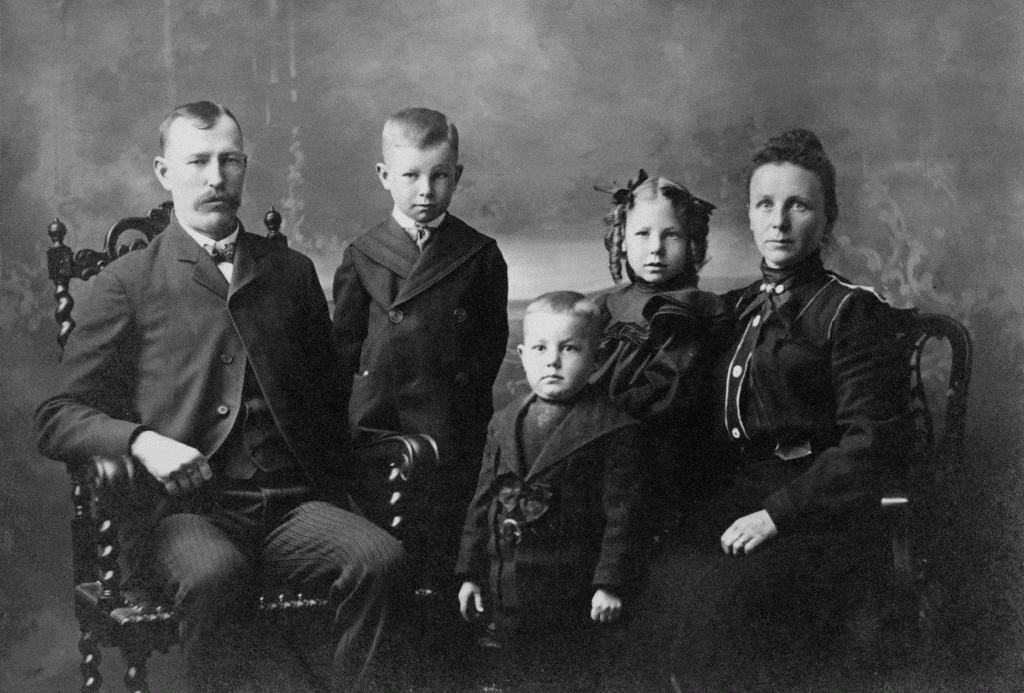
Credit: Park City Museum, Betty Coulter Collection
While untimely death was all too common in Park City’s early days, it wasn’t always black and white. A case that illustrates these shades of gray is that of Albert Holindrake. Content warning: This article contains mention of suicide.
Born in American Fork in 1864, Holindrake moved to Park City at age 22 to pursue his fortunes in the silver mines, including the Silver King and the Ontario. He was described as “a quiet, law-abiding citizen … generally liked and respected” by the community and “a good and indulgent husband and father” to his wife, Nancy, and their children.[1]
These qualities were likely what landed him a job on the police force in 1908. Tragically, Holindrake died only six days after accepting his new post.
Just before 1:30 a.m. on January 5, Holindrake and his partner, Frank Peterson, returned to City Hall after the evening patrol. Peterson immediately went to the basement to stoke the furnace, leaving Holindrake upstairs. Moments later, Peterson heard a gunshot. He hurried upstairs to find Holindrake dead in his desk chair, his police revolver on the floor next to him, one chamber emptied of its bullet.
The circumstances of Holindrake’s death prompted a coroner’s inquest. Although the coroner ruled Holindrake’s demise an accident because Holindrake was inexperienced with firearms, this seems unlikely.
After the inquest, the Park Record reported that “the bullet entered the mouth, squarely between the teeth” and exited “near the base of the skull.” The newspaper also indicated Holindrake talked about killing himself in the weeks before his death. These details, compounded by the Park Record’s lack of evidence supporting the accident theory, suggest Holindrake died by suicide.
That said, there are many reasons the coroner would not have ruled it as such. Chief among these was the contemporary understanding that suicide was the ultimate symptom of serious emotional disorder; this revelation would have damaged Holindrake’s reputation.[2] Furthermore, it would have reflected poorly on his wife, Sarah. According to common beliefs of the time, a wife failed in her duties as a household’s moral safeguard if her husband killed himself.[3]
Whatever the true cause of Albert Holindrake’s death might have been, his resting place is certain. He is buried at Glenwood Cemetery alongside his son, Joseph, who died much later.
If you or someone you know is experiencing suicidal thoughts, call the Suicide Prevention Lifeline at 1-800-273-8255.
To hear more tales of life and death in old Park City, don’t
miss Barbara Martz’s lecture on the Glenwood Cemetery tonight (Wed.) at the
Park City Museum’s Education and Collections Center, located at 2079 Sidewinder
Drive.
1. “Was Accidental, Coroner’s Jury So Decide in Sad Case of Al. Holindrake,” Park Record (Park City, UT), January 18, 1908.
2. Howard I. Kushner, “American Psychiatry and the Cause of Suicide, 1844-1917,” Bulletin of the History of Medicine 60 no. 1 (1986), 43.
3. Howard I. Kushner, “Suicide, Gender, and the Fear of Modernity in Nineteenth-Century Medical and Social Thought, Journal of Social History 26 no.3 (1993), 467.